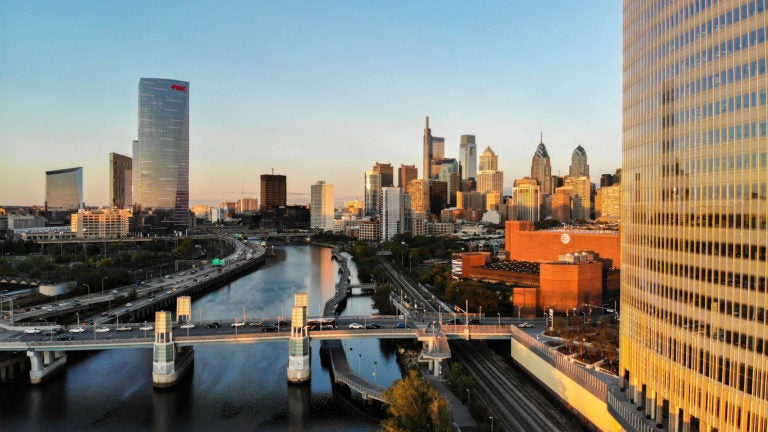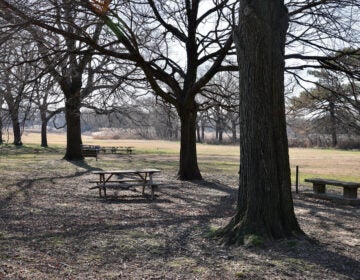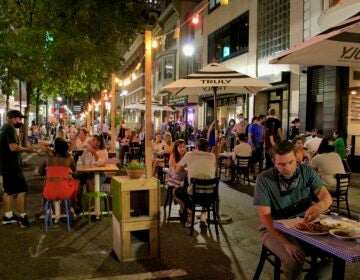How Philly’s neighborhoods can help us understand pandemics
Good urban design helped Philadelphia stop 19th-century disease outbreaks. It can also lessen the impact of COVID-19 and future epidemics.

(Mark Henninger/Imagic Digital)
The Schuylkill River was once both open sewer and water source for Philadelphia. Until about 1908, the dual arrangement caused bacterial contamination of the drinking water supply and repeated outbreaks of typhoid fever and cholera that killed thousands of Philadelphians. In one early preventive effort, officials tried to stem the death toll by clearing homes and businesses from the riverbank and creating a massive park instead.
“The Board of Health was very alarmed, and the population of the city, politicians, were calling for something to be done,” said David Barnes, a historian at the University of Pennsylvania who studies epidemics.
That something ended up becoming Fairmount Park. Philadelphia added thousands of acres to what had been a relatively small park around its riverside waterworks facility, reducing the city’s contribution to the river’s filth.
“The idea behind Fairmount Park is that the city would protect the Schuylkill by buying up all the land on either side of the river for miles, so that they could prevent water pollution,” Barnes said.
The project demonstrates the intertwined nature of urban design and disease management in the 19th century, a period when epidemics powerfully influenced the “physical fabric” of cities around the world.
In fact, Philadelphia and other modern cities could not have survived or continued to grow without innovations like sewers and water filtration systems, which allowed urban density to occur safely.
Around the same time that city officials were enlarging Fairmount Park, scientists were beginning to understand that illnesses like typhoid and cholera were caused by microorganisms. The field of public health started shifting toward developing immunizations and medical treatments rather than improving urban infrastructure. Yet even now, medicine alone still cannot protect everyone from disease outbreaks, as the COVID-19 pandemic demonstrates.
Barnes and others say that, along with other nonmedical control methods like quarantines and social distancing, good urban design remains a powerful and necessary tool for protecting the health of city residents.
For example, Barnes noted that the new coronavirus is particularly dangerous when a person has a compromised immune system. Lack of exercise and chronic stress can contribute to weak immunity, along with factors like older age, poor diet, insufficient sleep, and excessive alcohol use. That suggests that building walkable neighborhoods, parks, playgrounds, and bicycle lanes to make it more convenient to exercise, and to provide people with ways to reduce physiological and psychological stress, can lessen the impact of infectious diseases.
“There’s a lot that city planning can do to make people healthier, and it’s mostly on the side of immunity,” Barnes argued. “Yet for historical reasons, we have made public health all about specific diseases and specific germs.”
Density requires ‘parks of different scales and sizes’
In addition to building sewer systems and providing clean water, urban planners historically tried to prevent the spread of disease by reducing the high population density that defines cities. In some places, decongestion campaigns could be brutal, as when Baron Haussman razed poor, cholera-plagued neighborhoods in Paris in the 1850s, displacing thousands of poor Parisians as he built wide boulevards, water and sewer systems, and parks.
In New York, where tuberculosis was a leading cause of death in the early 1900s, social reformers like Jacob Riis documented the squalid, overcrowded conditions in tenements, leading to the passage of laws that set space requirements and mandated air shafts, windows, fire safety features, running water and indoor toilets.
Today, New York remains the densest of large U.S. cities with about 27,000 people per square mile — far less dense than cities such as Manila, with close to 120,000 people per square mile and Baghdad with over 85,000.
While Philadelphia ranks far down the list at 11,234 people per square mile, density remains a challenge when a new contagion enters the urban landscape.
While COVID-19 is a viral illness rather than a bacterial disease like tuberculosis, both are spread through proximity to infected people rather than a vector, like polluted water or mosquitoes.
In moments like these, parks not only help people stay healthy but also serve as safe overflow spaces during both disease outbreaks and normal times, said Eugenie Birch, a professor at Penn’s Weitzman School of Design and co-director of the Penn Institute for Urban Research (PennIUR).
The crush of park visitors seen in recent weeks at certain Philadelphia green spaces “is underlining the fact that we don’t have enough well-integrated public space in our neighborhoods,” Birch said.
“It doesn’t mean you have to have acres and acres in every neighborhood, but it does mean you need to have spaces that are connected, that are part of a system so that people can move through the system, not a little park here and a little park there. You need parks of different scales and different uses.”
After the 1906 earthquake and fires that destroyed much of San Francisco, parks provided vital open space where survivors could gather and set up temporary shelters, Birch noted.
Public space also offers an opportunity to expand alternative transportation networks. Trails, after all, can do double duty as recreational amenities and connectors.
At a time when SEPTA has urged people to avoid using its system for fear of spreading coronavirus on crowded buses, trains and or in stations, the Bicycle Coalition of Greater Philadelphia (BCGP) called on city officials to respond to the coronavirus crisis by encouraging people to travel outside on bike lanes.
The city last week barred cars from a scenic section of Martin Luther King, Jr. Drive along the Schuylkill, which officials said, “will allow for greater social distancing among trail users.”
“We believe it will be important to shut down more streets, around the city, to motor vehicle traffic,” the BCGP wrote. “All neighborhoods are affected by the pandemic. All neighborhoods should have access to safe travel and recreation.”
‘Deconstructing’ density
In 1800, after thousands of residents died in an outbreak of yellow fever, a viral disease, future president Thomas Jefferson wrote to Philadelphia civic leader and physician Benjamin Rush that he hoped “the yellow fever will discourage the growth of great cities in our nation and I view great cities as pestilential to the morals, the health and the liberties of man.”
“Luckily, they didn’t learn that lesson,” Barnes said. “Cities aren’t horrible. Cities aren’t fundamentally unhealthy.”
Especially not when density is managed.
Paris Mayor Anne Hidalgo has proposed decentralizing or “deconstructing” her city so every neighborhood has a mix of stores, homes, office buildings and other uses, and residents can satisfy most of their needs within a 15-minute walk.
Birch said Philadelphia and other urban centers could benefit from similar efforts.
“If you create more walkable neighborhoods and put services and jobs in those neighborhoods, then perhaps you can alleviate the extreme density and crowdedness you have in various systems” such as public transit, she said.
Tenement crowding is no longer a major issue in U.S. cities, but Birch said providing safe housing for populations in need remains an important priority. Policymakers can focus on creating more affordable housing to prevent the chronic stress caused by housing instability and long commutes, as well as rental assistance programs of the type Philadelphia is currently rolling out.
With stable housing, residents have a place to hunker down when ordered to shelter in place during a disease outbreak, and people who would otherwise be homeless can avoid the risks from staying in crowded temporary shelters.
Among other urban planning concerns, cities can also work to make sure they have enough hospitals with surge capacity to handle disease outbreaks, said Susan Wachter, co-director at PennIUR and a professor of real estate at the Wharton School. “We will learn from this episode how to do that better, obviously,” she said with a grim laugh. “Because we probably can learn, unfortunately.”
Beyond urban design, experts say city officials can always do more to provide programs and services that help families stay healthy in both emergency periods and regular daily life.
As the COVID-19 lockdown drives the economy into recession, supporting lower-income residents, in particular, will be critical so that they don’t go hungry, lose their housing, or suffer other losses that make them even more vulnerable to disease and other stresses of urban life, Barnes said.
“This is a case where viewing the question just in terms of a single disease is myopic. I’m afraid that our current response is going to probably limit the spread of coronavirus and create a whole [bunch] of unintended consequences through the economic suffering, and people are going to get sick and die of other things,” he said.
We should not “try to think of some peculiarity of the coronavirus that would change the way we think about cities,” he said. “That would be a mistake because the next epidemic is going to be something different.”
WHYY is your source for fact-based, in-depth journalism and information. As a nonprofit organization, we rely on financial support from readers like you. Please give today.





![CoronavirusPandemic_1024x512[1]](https://whyy.org/wp-content/uploads/2020/03/CoronavirusPandemic_1024x5121-300x150.jpg)


